50 million people in 45 countries are on the brink of famine and nearly 345 million face acute food insecurity [UN]. These drastic numbers are only expected to rise as climate departure grows in intensity. We not only need to invest more money, but also find new solutions.
One admittedly out-of-the-box idea is to pack all essential resources a community might need in the wake of a disaster, from emergency medical services, clean drinking water, food, power sources, and internet access tools – onto a large, self-contained boat.
This idea would be part cruise ship, part cargo ship, part farm – harnessing the latest innovations to create a self-sustaining vessel that could criss cross the world, seeking out people in need. Most importantly, it would be built to not just provide temporary aid, but to leave lasting infrastructure with communities to bolster their resilience (more on that later on).
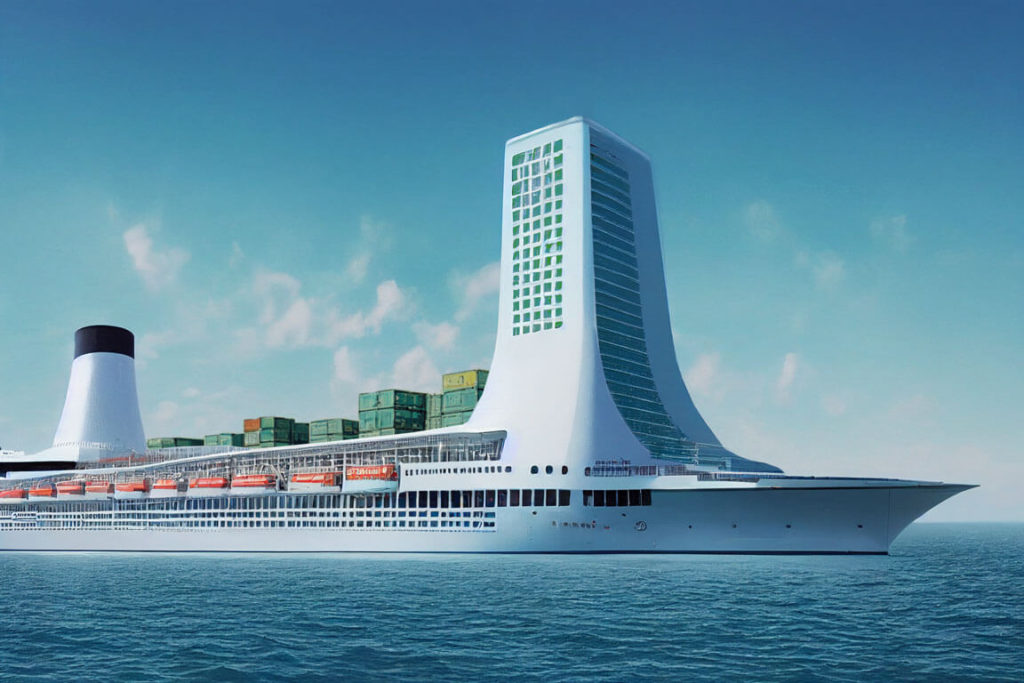
While on the surface this may seem unconventional, we as a society already have many of the lego blocks in place to make this happen – it’s mostly a matter of fitting all those pieces together, and of course, a decent infusion of cash.
The Current Landscape of Food Aid … Needs An Upgrade
According to the U.S. Government Accountability Office (GAO), the US is the largest global funder of food aid, which averages ~ $16 billion per year. However, antiquated US laws dictate that the food used for aid be grown and purchased in the U.S., and on top of that, most of that food has to be transported on U.S. owned vessels.
This winds up being a pretty inefficient system according to writer Katrin Park, who writes in Foreign Policy that nearly 75% of the U.S. portion of food aid goes to the cost of processing and shipping U.S. food overseas. More broadly, Oxfam has found that 59 cents of every dollar for basic grains for food aid ends up in the pockets of middle men.
Other aid-providing countries have started to now just provide cash donations, as studies have shown cash flow provides more immediate help to relief efforts by allowing these affected communities to buy more food regionally, which also helps with economic development.
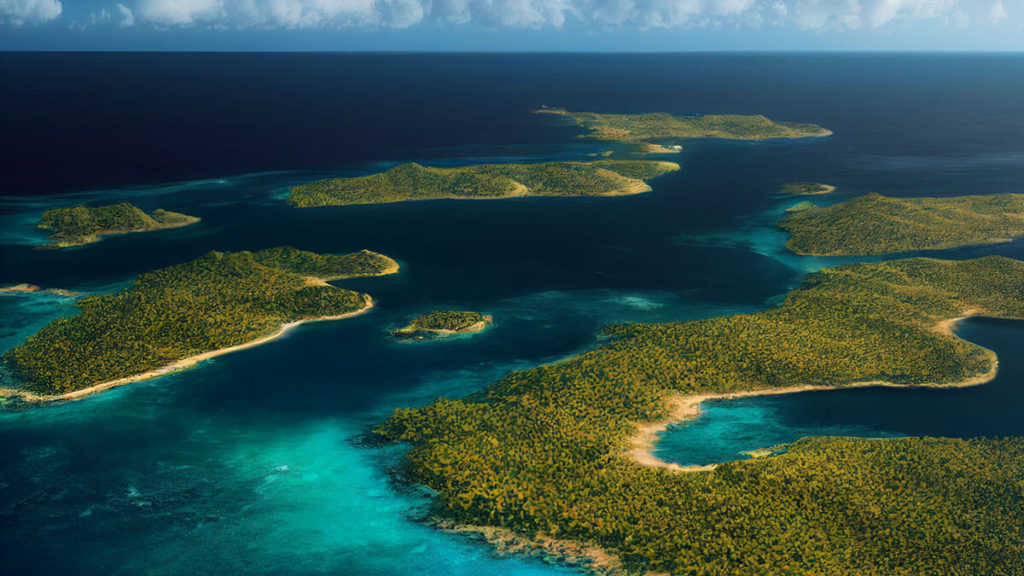
But this direct cash method may not always be possible, especially in the case of island nations. The World Bank estimates that in the Caribbean, 80-90% of all food consumed in the region comes from abroad. When disaster strikes in these areas, they will still need to get food shipped in – and looking at the issues with our current food aid system, there is a critical need for more efficient and resilient ways to do it. So this Floating Farm could be an alternative solution.
Though how exactly could it take shape? Let’s look at some of its notable features, mainly focusing on solutions around water, power, and food.
Water is not a solid wall, it will not stop you
Did you know that most cruise ships desalinate their own water? Yachts do too, and they even have portable water makers for small boats. This process entails either a trusted method where they evaporate sea water into steam or newer techniques like reverse osmosis, the process used in industrial desalination (desal).
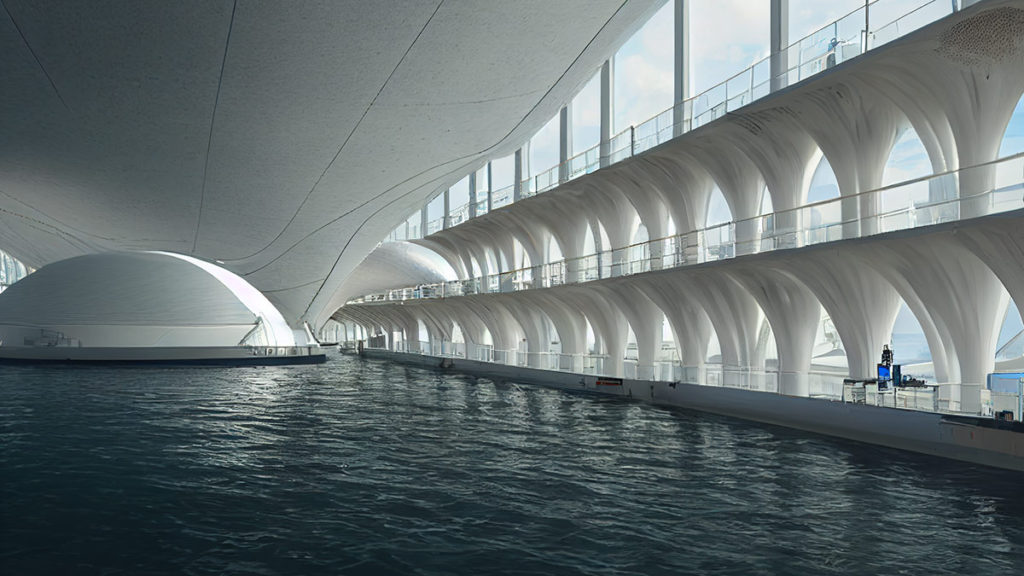
In fact, large cruise ships can have upwards of 500,000 gallon water storage tanks, and depending on their set-up, they can create 100,000+ gallons of drinking water per day. You probably know that the desal process is expensive, and a big reason is that it’s quite power intensive. While scientists are making good progress on improving the efficiency of reverse osmosis, this ship would obviously need to steer far away from what is now mostly used (bunker fuel, yuk) and take advantage of an abundant clean source of power.
The Nuclear Option
A vital component of this vessel is to ensure that it is energy independent, as with all of the services it will have on board, it can’t be worried about constantly seeking out fuel. In recent years, there has been meaningful progress made around hydrogen-powered boats (like this cargo ship), which becomes even more intriguing when we consider the growing potential of using seawater as an input to create green hydrogen. Or, if we’d want to retrofit a boat and leave its engine intact, we could consider a carbon neutral biofuel made from algae (something which the U.S. Navy has been testing for years). Though it would ideally need to produce algae from ocean water, something that recent research points to being feasible. What’s obviously most intriguing about both these solutions is that they can create their fuel by utilizing the most abundant resource in the ocean.
However, neither hydrogen or algae biofuel have been fully commercialized, so one of the most elegant solutions would be to focus on a more proven technology, which is believe it or not, nuclear energy.
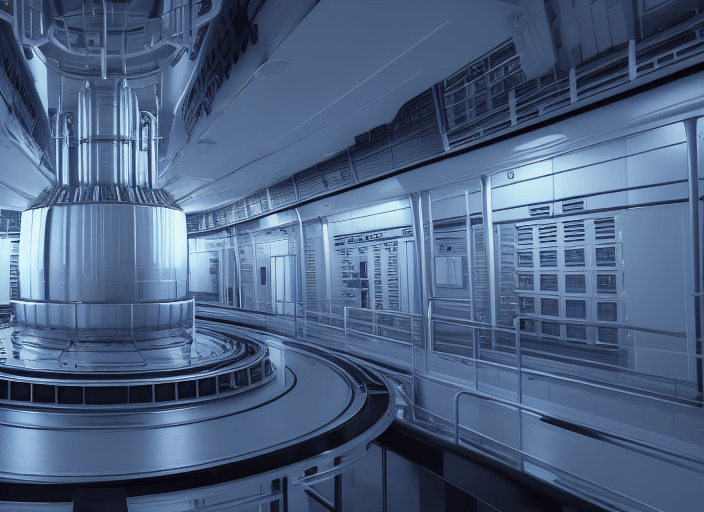
You might be thinking – umm, is that even possible? And if so, isn’t putting a nuclear reactor on a boat a bad idea? The reality is that there are currently an estimated 160 nuclear submarines in operation (that we know about). Even more surprising, back in the 1960’s, there were a small fleet of commercial nuclear powered ships as well – even nuclear passenger boats. If you haven’t yet discovered the marvel that is the Youtube channel Mustard, this video provides a great overview of this forgotten era:
But it’s not just military and relics of yesteryear. Over the past few years, we’ve seen new commercial concepts pop up, due in part to the development of a reactor that uses the less volatile element Thorium instead of Uranium, which produces less waste, can easily be shut off, and does not have to operate under extreme pressures. There are even concept ships like Earth 300 or Thor (below) which was designed by Norwegian company Ulstein, and aims to be part rescue boat, part fill up tanker for electric boats, and part research vessel.
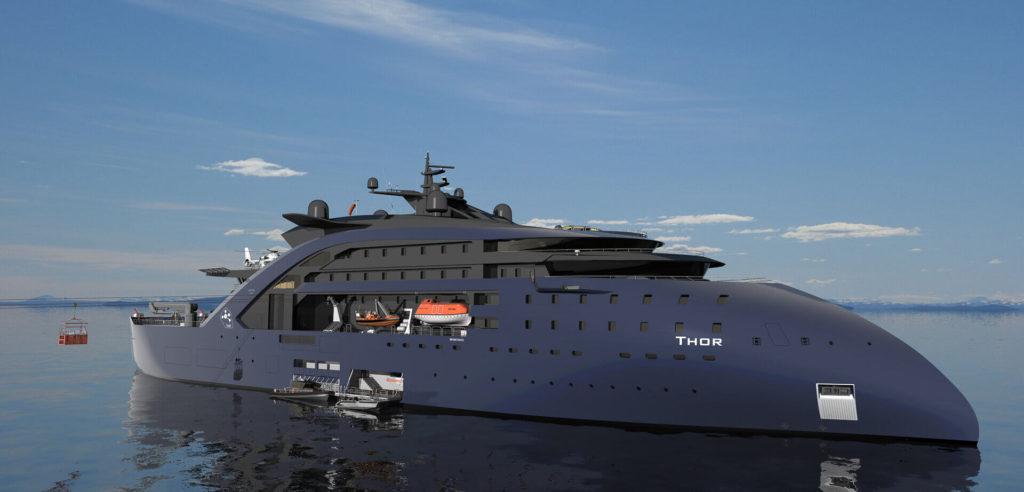
So water and energy are taken care of, the next step to truly sustain people is kilocalories.
Life is a combination of magic and pasta
If you’re up to date with the food tech scene, you know that we’re in the midst of some incredible innovations that could find a natural home onboard, specifically lab-grown protein and vertical farms.
While both methods need controlled environments – which will admittedly prove to be a bit of an R&D challenge on open water – they can otherwise be set up pretty much anywhere, needing just water (check), a constant source of energy (check), and their respective inputs (nutrients, serums, etc, which can all be stored in bulk onboard).
We’ve got produce growing up the walls
Vertical farms seem to be just on the cusp of primetime in our daily lives, and for good reason. They produce, well, produce, 365 days a year, rain or shine, using very little water, and are amazingly efficient and productive. Some estimates have larger facilities at a staggering 350x multiplier over open field farming. One company, Nordic Harvest, is currently building a 75,000 square foot facility, which is expected to supply 1,000 tons of food per year. If the floating vertical farm was just half that size (and note that large modern cruise ships often have at least 600,000 sq feet), the ship could easily yield at least 1 ton of produce every day.
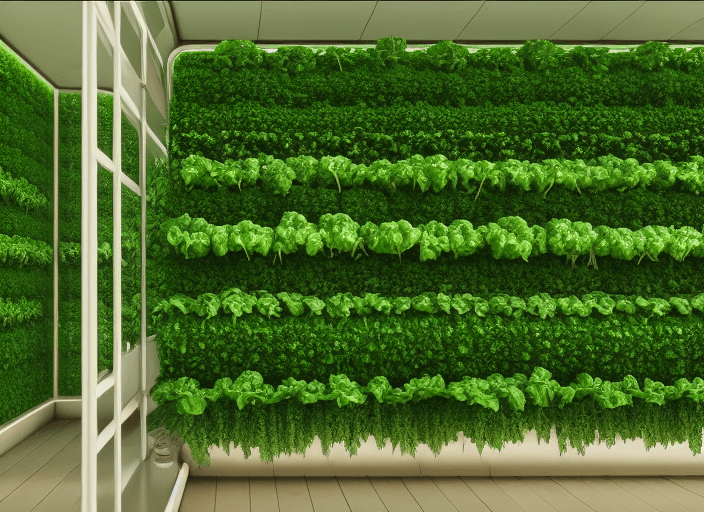
The types of foods that we currently see grown inside vertical farms are based on the economics, often compromising on nutrient density for easy to grow, high-yield foods like lettuces, tomatoes and herbs. It’s not that we can’t grow hydroponic wheat, rice, and soy, they just don’t currently work for businesses’ bottom line. But knowing it was built for aid, this farm could grow super nutrient dense foods as well.
There might even be an opportunity to use seawater (at least partially) as an input, as we’re now seeing hydroponic agriculture companies like Heron Farms growing ocean-native crops. Scientists are also using CRISPR technology to create genetically modified crops that could allow us to potentially grow many kinds of foods from ocean water in the future
While this could potentially be enough to fulfill nutrition requirements, we’d also want to dedicate resources to protein-dense foods, as well.
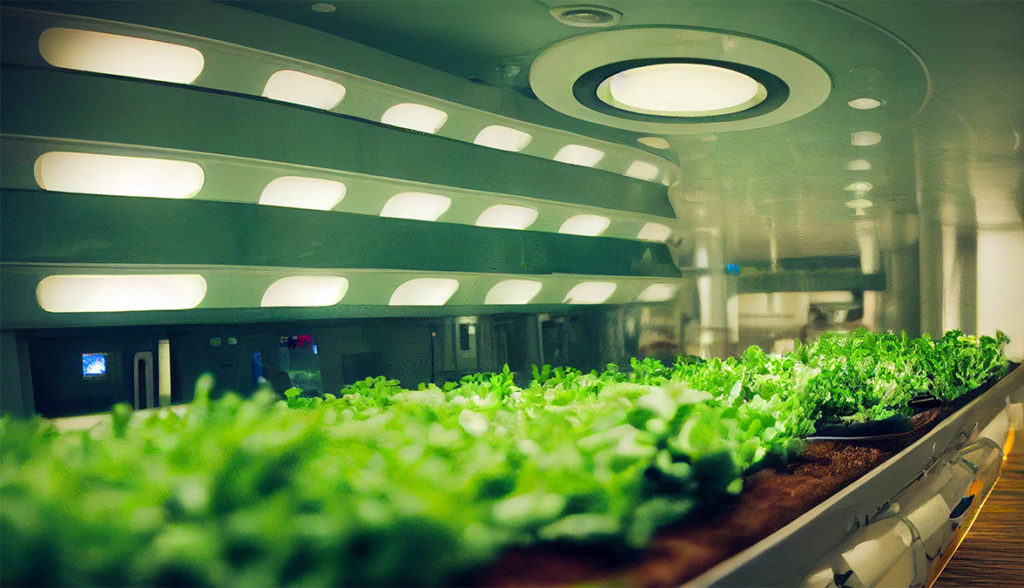
Grazing past the cattle protein option
For this, we could look to innovations in the cultivated meat space, notably in cell-based chicken, steak, and salmon. Some life cycle assessments have shown that they are 3.5 times more efficient than conventional meat (and vastly more sustainable in terms of emissions, waste and water), though it is still not a fully proven technology. Then, there are crickets as a food source, which if the Western diet can get over the taboo factor, are impressively nutritious, and in addition some estimates claim they are 12x as efficient as meat from cattle. Algae would be an intriguing option, as well, as it grows extremely fast (like, doubles in size every 24 hours fast) and has other benefits like cleaning wastewater and as previously mentioned, could be used as a biofuel. But there is another even more intriguing option that might take the cake – mycelium.
Growing mycelium as meat, like what the startup Meati is doing, uses a similar, yet simpler process than cultivated meat. Plus, their yields are much more impressive. Meati claims that they’ll be able to grow ~ 1000 tons of meat a day (they explain it as the equivalent of 4,500 cows) in a massive factory they’re currently building. If it turns out to be as efficient as they claim (and people enjoy the product), this could have huge implications for our food system at large, and might also be a great solution for our Floating Farm.
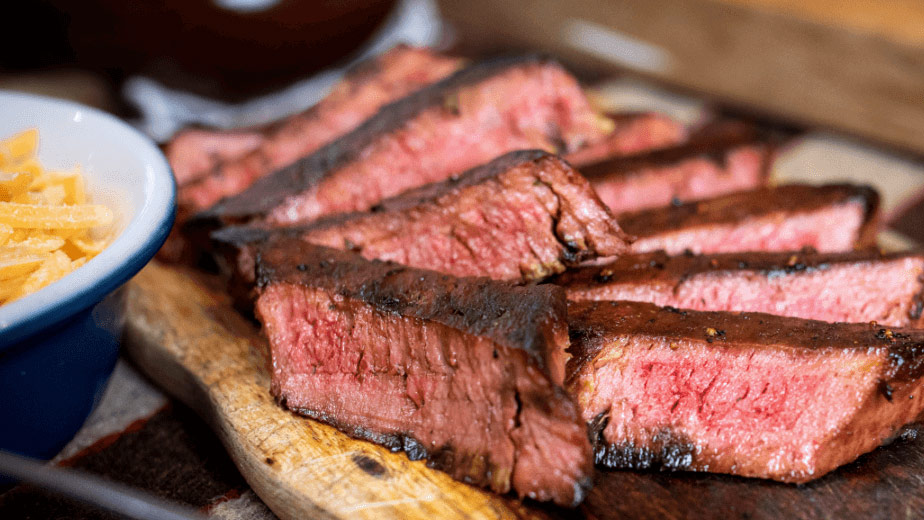
With the combined protein and produce, we could be looking at a yield of tons of daily food for those in need. And lest you think that growing more than a ton of food a day feels unrealistic on a boat, consider the fact that a large cruise ship goes through this amount every week:
- 60,000 eggs
- 20,000 lbs of potatoes
- 15,000 lbs of steak
- 9700 lbs of chicken
- 1500 lbs of coffee [Source CNN]
Keep in mind that this all (and much more) needs to be loaded and stored on board, on a boat that’s filled to the brim with guests, rooms and amenities. It makes you wonder if it might just make sense to implement some of these alternative food systems onto existing cruise ship lines, so they can start growing some of their own food … notably as some ships spend $1 Million a week on food alone.
Floating Farms aren’t just a short term play
While it would be amazing to have a fleet of these ships circumnavigating the globe, if something like this ship were ever to be built (which let’s be honest, doesn’t seem that likely), there would most likely be only one of them. Which means it would only be able to stay in one place for a short window of time.
So, while the immediate goal would be to stabilize a community, its broader initiatives would be one of the primary aims of the World Food Programme, to provide Resilience Building.
How would we do that? Here’s where we fuse the idea of a cruise ship with a cargo ship, because if there’s one thing cargo ships are good for, it’s carrying shipping containers. And unless you live under a rock, you’ve probably noticed that people are doing a lot with shipping containers. They’re obviously building homes, but also building small vertical farms (called container farms), emergency shelters, hospitals, desalination plants, and even developing micro grids with solar arrays and battery storage.
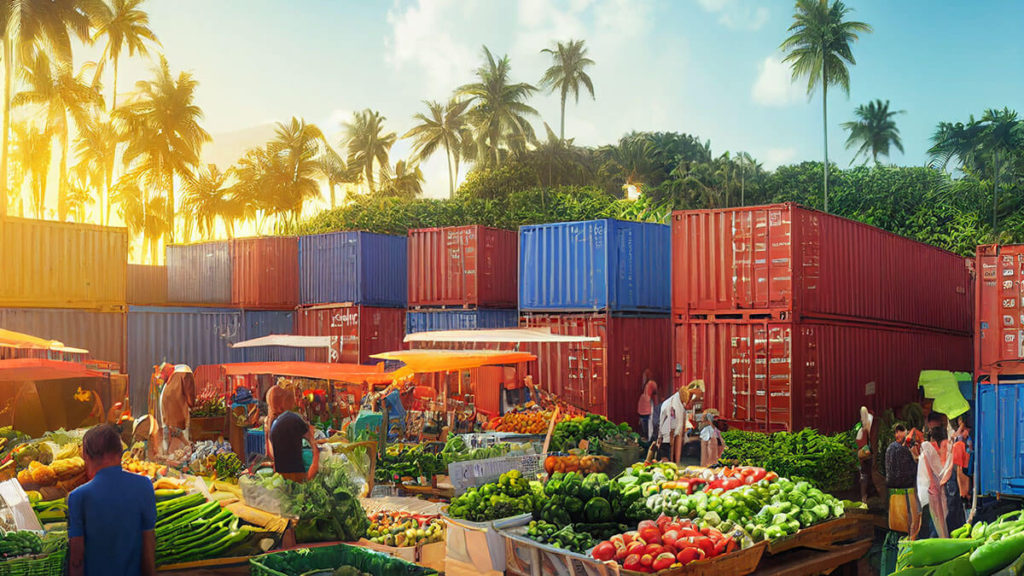
In this scenario, the containers would be some of the first things loaded off the boat, spinning up the emergency services, container farm production, micro grid, internet access and more. And this would also entail workforce training, educating and empowering the local community to operate many of these services on their own after the Floating Farm had moved on.
Feasible? Potentially. Realistic? See: $$$
It’s obviously quite difficult to estimate what the actual costs would be for the Floating Farm, as nothing like this has even been built. But, if we look at some of the numbers of existing vessels, a medium-sized cargo ship costs on average $50 million, whereas a medium-sized cruise ship costs ~ $500 million (on-board water slides aren’t cheap!)
Then, there are the operating costs to consider, which for cargo ships are estimated to be $9 million a year, and for cruise ships unsurprisingly sit much higher at $300 million annually. One important call out here is that fuel accounts for a sizable portion of ongoing operating costs, which could theoretically be reduced in our scenario.
Of course, our Floating Farm would need some serious R&D, as some of the components obviously have never been ported into a boat and brought all together. This would also entail a specialized staff (including engineers, farmers, disaster relief teams, medical staff, and ship crew), plus the costs associated with regularly replenishing the containers when the boat heads to new disaster-stricken areas (which might be one of the most expensive on-going costs).
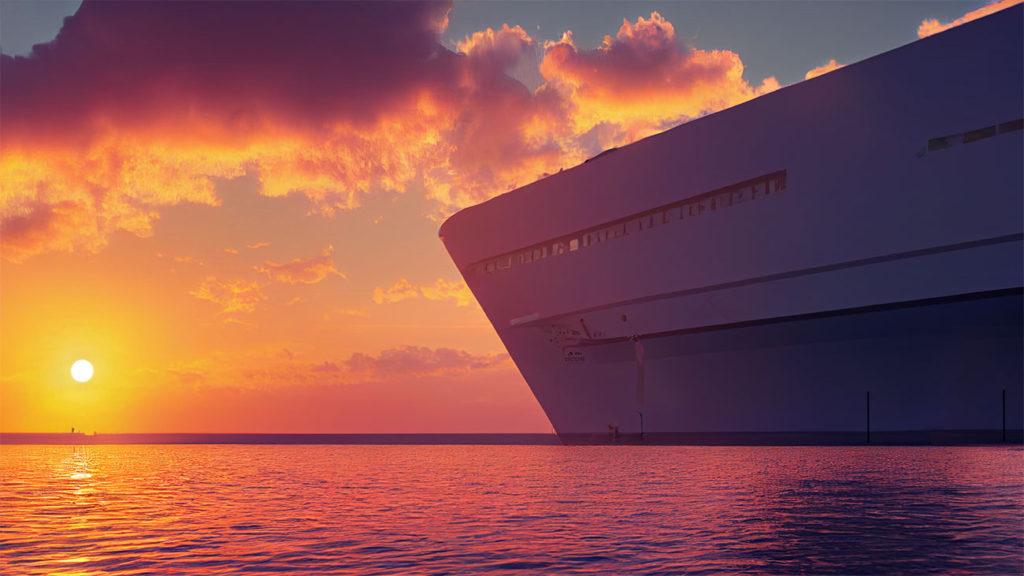
The tl;dr is that this is no way a cheap endeavor, and we can safely assume it would be at least $1 Billion for a pilot ship. To put that into perspective, this would be 6% of our global annual expenditure on food relief. Now considering groups like the World Food Program are consistently falling short of their funding goals, the likelihood of something like this being born into the world for this purpose is a moon shot … though could easily be a project for a billionaire, some of whom already own billion dollar private yachts.
In Short…
At the very least, I hope this sparks new conversations about solutions around climate resiliency. Climate disasters are estimated to only increase in frequency, and more and more communities are going to be dealing with hardships, and some will face the possibility of climate retreat. And so we need to have a diverse toolkit at our disposal, thinking through short, medium and long term scenarios, and how ideas like a Floating Farm, could help mitigate the worst of what’s to come.
In addition, there are hopefully elements in this piece to spur ideas around incorporating more sustainable, closed loop systems into boats. Maybe in the future we’ll have boats whose sole purpose is desalination, providing temporary water aid to areas in need. It also seems like a no brainer to incorporate container farms into ships, notably on cruise lines. And who knows, we might even find ways to permanently live and thrive out at sea – kinda like Water World, but without the dystopia.
What do you think about this idea? Would you add other resources? Does it totally miss the mark? Let me know in the comments, or feel free to drop me a line.


